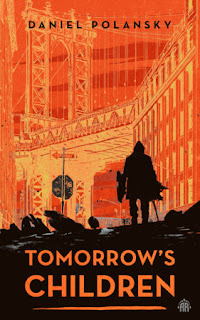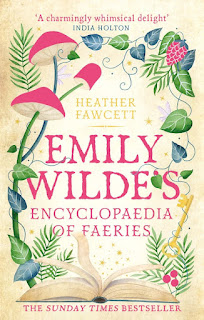Review - Tomorrow's Children by Daniel Polansky
I quite enjoyed this book as something different, edgy and fast paced. In a near-future New York, one of its main islands has become separated by an ever-present supernatural fog ('the funk') from the rest of the world. Because of this isolation, over time its own distinct society has developed, structured around gang-like clans held in a balance of power, homebrew religious sects and a need to survive. This strange location is disrupted by the arrival of an outsider, and what follows is a violent, often amusing, rapidly paced romp filled with lots of action and snappy dialogue.
The story begins with the death of a local clan boss and many of his followers, which disrupts the power balance. A hardened veteran, Gillian, is chosen as the Sheriff to investigate the disturbance. We are also introduced to a varied group of characters during the course of her investigations and manipulations. The Kid is a chain-smoking, tough but mysterious hitman and soldier, whose relationship with Gillian is eventually revealed. Swan is a virtually blinded, drunken samurai-type fighter, who despite his weaknesses and world-weariness is nevertheless seemingly invincible. Maryland Slim is an extravagantly portrayed underworld figure, probably the strongest in the novel. He is lecherous, scheming and overweight, but also a telepath who can wage psychic war on others. There are a number of other interesting side characters, including Nelly the cat lady, who can use the viewpoints of cats' eyes for spying, and Dade and Ariadne the tunnel dwellers, whose own society is vividly imagined. And Ael is another swordsman, whose ridiculous obsession with becoming the very best sparks one of the most rollicking sequences in the book.
One of the religious groups, the Honey Swallowers, is framed for wrongdoing and a climactic battle ensues. While this is developing, Gillian and The Kid must deal with the King of TriBeCa, a mysterious leader of mutants who also wields strange powers over the funk. This fading King is trying to acquire a young boy, Newton, who he believes is the heir to his powers. Meanwhile, the outsider, Mr Simpson, who has been pulling strings behind the scenes, tries to kidnap several of the psychically talented people of the island in a violent attack.
The story is strongest when its merely enjoyed as violent, fast paced romp. It is darkly funny at times and many of the goings-on are coldly absurdist in tone, which certain readers will enjoy. The social norms, dialects and odd vocabulary of the island's residents are elaborately imagined. There are many startling incidents you'll encounter while reading (which is definitely a worthy achievement in any current book). The chapters are short and are structured with small sections within them. This is a neat example of "show me, don't tell me" storytelling, and once you can piece together the connections between the sections and the story being told, you can appreciate some clever achievements.
I didn't really mind the use of emoji symbols in the text. Perhaps it has a deeper meaning, regarding the degeneration of future people's language. But I did ask myself: if there's not much electricity available, how would anyone use emojis to communicate with each other on a powered device?
I could also see some influences or similarities between this book with other works: the kind of amoral "ultraviolence" like in A Clockwork Orange; a weird future with unusual residents like in the Viriconium series; and the future street culture with its mannerisms as Gibson's Sprawl trilogy. And action scenes reminiscent of what you'd see in the Mad Max movies, or any pumped-up Hollywood blockbuster.
There were a few things that didn't quite settle in the mix, however. Like some other readers, I found the beginning difficult to get into, with the many characters we're introduced to and the unfamiliar slang to understand. The dystopian story with its characters inclined to instant violence lacks an emotional heart; it's not a world I could imagine really living in. And some of the female characters weren't rounded or that convincing; I found them a bit too tough and unemotional. But all these flaws can be set aside, as mentioned, if you take the story for what it is: a darkly amusing tale with much action, as long as you don't think about it too deeply.
Thanks to Angry Robot books and Netgalley for an ARC of this book.
Rating: 4 stars (out of 5)
⭐⭐⭐⭐








